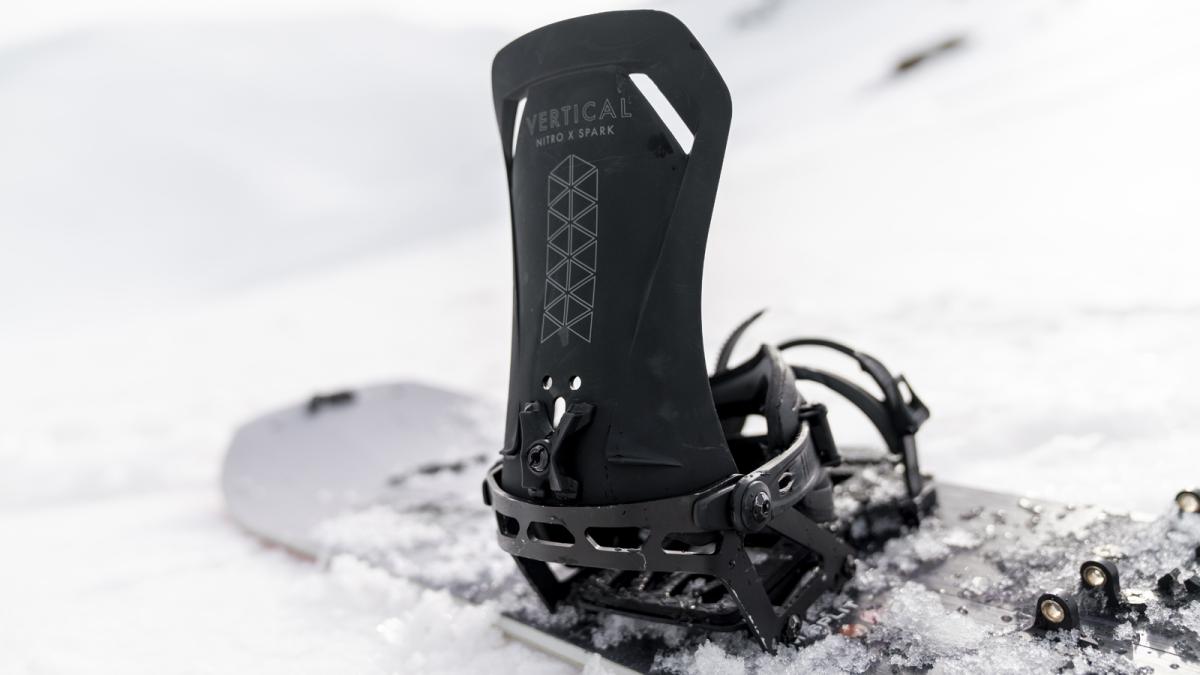Types of bindings:
There are two main types available; the hard or alpine and soft or free bindings. Hard bindings work best with hard boots and are used with an alpine board while soft bindings are suited for soft boots and a free board. Snowboard bindings are, contrary to most ski bindings, non-release bindings that is the boots are not released in case of a fall.
This is because of the different technique of snowboarding does not make that necessary.
Hard bindings: The size of the bindings can be adjusted to that of the boots. The heel or toe end is held firmly in place by both the strap and step-in systems. Hard bindings work with alpine boards and are recommended for high-speed riding as their responsiveness provides maximum leverage, precision and effective control. Alas, as alpine boots and boards, hard bindings are also increasingly difficult to find in shops these days.
K2 advice: alpine bindings can be used with ski boots but if you are serious about snowboarding, you should get a pair of snowboard boots as their design is more suited for riding, the heels do not impede the rider at turns.
Soft bindings: Soft bindings are the most widely used type of bindings that can only be used with soft snowboard boots. They allow more freedom than hard bindings. The boots are held securely by two straps or a step-in system.
Main parts of soft bindings:
• base plate that is in touch with the sole of your boot • the disc that enables you to mount the binding on the board and to set the desired angle • the ankle and the toe straps to be adjusted so that your boot and foot are held firmly and securely • the heel loop that holds the heel of your boot and foot in place • and the highback plate that secures the backside of your lower leg and helps to control the board while turning
• professional models have an adjustable ‘accelerator’, the part under the toe of the boot that makes for better stability and control.
K2 advice: it is best to choose bindings with cap-straps for toe straps that hold the toe ends of your boots in position in a way that when fastened they do not apply pressure on the upper side of the foot but push your boots backwards and keep your heels in the right position.
Step-in Bindings
Both hard and soft bindings have their step-in versions. Step-in is basically for comfort as these type of bindings are quicker and easier to get into or out of than the traditional strap bindings. It seems though that due to the relatively frequent problems with step-in bindings (these might be a result of the mechanics employed) they have become less popular recently. Some manufacturers did not give up on the step-in system and in order to put comfortable and easy-to-deal-with bindings on the market introduced a ‘half-step-in system’. The company Flow was the first to use this technology that worked perfectly with Flow boots and allowed for the back plate of soft bindings to open backwards so that the rider could get into and out of bindings without loosening straps like sliding a foot into a slipper. The system became used by various brands and further improvements were applied.
However, innovation over the last few years has now overtaken all previous systems, and the Burton StepOn is in full swing!
It's another easy-to-use, reliable system that can only be used with the right boots.
Mounting bindings:
There are different solutions for fastening bindings to the snowboard therefore board and binding compatibility should always be checked. Most boards have 4 holes for bindings and BURTON boards have 3 but manufacturers are constantly improving to make riding even more comfortable and more fun. This ambition brought about the introduction of for example BURTON’s EST (binding)-ICS (Channel technology on board) that employs a radically new solution with metal tracks and moveable bolts. Innovations like that can however lead to compatibility problems with other brands so this great improvement in riding is not bad as a marketing trick either...
Angles and adjusting your bindings:
The angle of the lower leg to the vertical is the forward lean and can be set on all boards. When these angles are given as figures one of the numbers refers to the front foot and the other to the back foot. The angle should be set taking the rider’s habits and riding style into account. For a beginner smaller angles -for example 30/15 or 18/9- are ideal. Those who ride the board in both directions mount their bindings in a way that both feet are pointing outward and the angles can be for example 15/15. There are two options considering which foot is in frontal position considering the direction the boarder rides in, regular mounting is when the left foot is the front foot and goofy is when the rider’s right foot is up front.



